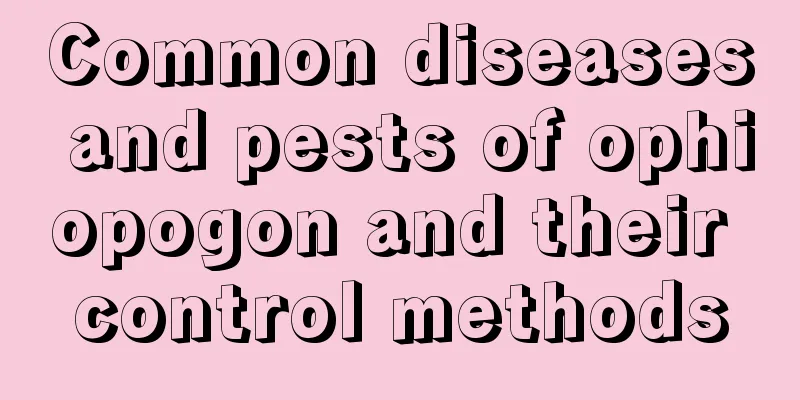Common diseases and pests of ophiopogon and their control methods

Sclerotium rotSymptomsIt often occurs in rainy season. When the disease first occurs, the leaf base is covered with white mycelium, causing the rhizomes to rot. Prevention and treatment methodsRemove the infected soil and sprinkle with pentachloronitrobenzene powder or lime. Pay attention to ventilation and light transmission, and ensure that the potting soil has good drainage. Severely diseased plants should be burned. anthraxSymptomsIt occurs all year round, and is more rampant during hot and rainy seasons. The lesions first extend from the leaf tip to the rhizome, initially being brown, and then gradually expand and increase in number, with many dry black spots appearing, leading to the death of the entire plant in severe cases. Prevention and treatment methodsIn addition to actively improving environmental conditions, during the disease period, you can first use 800-1500 times diluted 50% thiophanate methyl wettable powder for spraying once every 7-10 days; then supplement it with 1% equal-volume Bordeaux mixture once every half a month, and spray continuously for 3-5 times. Scale insectsSymptomsScale insects, commonly known as "orchid lice," reproduce fastest in hot, humid conditions with poor air circulation. Prevention and treatment methodsDuring the incubation period, 1% omethoate or 1500 times 50% malathion spray can be used. If there are not many pots, they can also be removed manually. The growing environment of the spotted tongue orchid should be kept ventilated and cool, with sufficient sunlight, but avoid direct sunlight. The environment should be suitable. There are fewer pathogens. Arrange indoor conditions suitable for the growth of flowers according to their growth habits to reduce the trouble caused by diseases and pests. |
<<: White crystal chrysanthemum pests and control methods
>>: Goldfinger Pests and Control Methods
Recommend
Why doesn't the Jade Leaf grow leaves?
1. Replace the soil Reason: Although the Jade Pla...
Ginseng Planting Conditions and Methods
Ginseng, known as the "king of herbs", ...
How to grow red Dongyun succulent
1. Breeding environment 1. Soil: To grow red Dong...
Cultivation methods and precautions of hydroponic ivy
1. Temperature It prefers a warm environment, and...
Key points of high-yield planting and management technology of loofah
Luffa plants have a high demand for fertilizer , ...
How to treat Monstera anthracnose
1. Symptoms When it is infected with anthrax, the...
The difference between wild lily and lily
1. Differences in stems Some of the stems of wild...
How many varieties of lilac do you know?
White lilac The flowers are white and the leaves ...
How to plant Kochia seeds
1. Collect seeds It is an annual herb and seeds n...
Does the cinnabar root prefer shade or sun?
Does the cinnabar root prefer shade or sun? Cinna...
What should I do if there are small white worms in the soil of the spider plant? How to kill them if there are small white worms?
1. The reason why there are small white worms in ...
Can the fortune tree recover after all its leaves have fallen off?
1. Can it be recovered? Even if all the leaves of...
When is the right time to prune willow trees?
Willow pruning Pruning willow trees can reduce nu...
How to grow cyclamen and what to pay attention to
Cyclamen growth habits Cyclamen likes warmth and ...
What soil is best for spider plants
1. Leaf mold We can feed it soil mixed with rotte...









